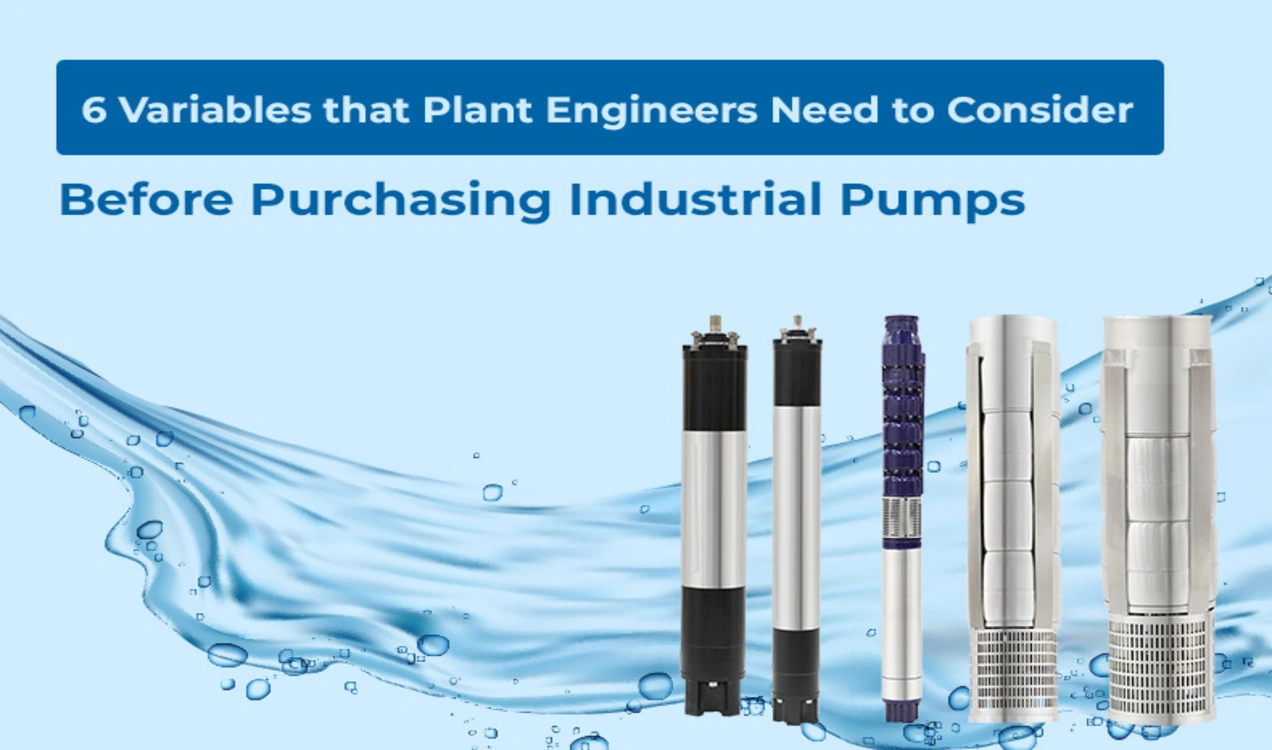The pumps and pumping systems are integral parts of all power plants and have various applications. They can be used for cooling and lubrication or to handle fuels, displace oils etc. Thus, it is essential for the maintenance engineers of all power plants to learn in detail about the pumping systems. You can determine what type of pump can function efficiently for a power-plant and can estimate the longevity of the device if you have this knowledge. Thus, you can make an informed decision before buying an industrial pump and the following tips may help.
Things To Consider Before Purchasing Industrial Pumps:
1. Nature of Liquid:
The type and nature of the liquid that is being pumped by a device are the primary factors to consider before selecting an industrial pump. For example,
- Multiple screw pumps are ideal for transferring different types of viscous liquids, such as crude oil, distillate fuels, low-sulfur fuels, residual/bunker fuels etc. The high-efficiency performance of this type of positive displacement pump makes them suitable for the aforementioned fluids since their viscosity exceeds 100 SSU.
- The progressing cavity pumps are ideal for the transfer of wastewater and fuel sludge. These pumping devices can withstand any damage caused by the liquids containing abrasive or waste materials.
2. Construction Material:
It is equally important to ensure that the material that is used for the construction of the pump remains unharmed after coming in contact with the liquid that is being driven by the machine.
3. Pressure Supply:
It is important to consider the pressure supply of the pumping system when selecting an industrial pump.
- Positive displacement pumps are ideal for scenarios where the pressure supply changes frequently. This type of pumping device is suitable for the liquid that is capable of maintaining a constant flow volume despite changes in the level of viscosity.
4. Pump Sizing:
Determining the correct size of a pumping device is as important as selecting the right type of pump.
- A system that is oversized with respect to the requirements of a power-plant will perform at less than the optimum level of efficiency. An oversized pump will even consume a lot of energy. A business has to spend more money for maintenance and servicing of the pump.
A pump that is undersized with respect to the needs of a power-plant may cost less when being installed. However, the pumping system may require frequent reworking and replacements in the near future. These additional expenditures outweigh the savings during installation.
Therefore, it is essential to correctly determine the size of a pumping system before investing:
- If the fluid is being delivered to the turbine, then it is safe to consider its lowest viscosity conditions or highest temperature in order to correctly size a pumping system. Through this calculation, you can ensure that the system will deliver sufficient flow.
- It is important to remember that the fluid has higher viscosity when it is cold. In this scenario, the pump will need more power to transfer the fluid and it is equally important to correctly size the motor which ensures that the pump can deliver the additional power that is required.
5. Pump Environment:
It is also important to consider the type of the surrounding environment before installing a pump. For example,
- Special construction or installation considerations are necessary if a pump will be installed outside.
- Special motor features are necessary if a pump has to be installed in a hazardous environment containing vapors or dust.
Therefore, you have to consider the environment where a pump will be installed before selecting a device.
6. Cost of Maintenance:
The cost of maintaining a pumping system is another important factor to consider since this is a substantial expenditure. Thus, it is important to have a scheduled preventive maintenance program if you want to avoid downtime and expensive repairs. A power plant may have auxiliary pumps along with main pumps. The auxiliary pumps are used less frequently and require less maintenance. The main pumps are used for important operations (fuel injection, fuel forwarding etc.) and they need routine maintenance for seamless operations.
The following are preventive maintenance tips for submersible pumps:
Look for leakage in mechanical seals and replace the damaged seal if there is any evidence of leakage.
- Look for worn out gaskets and O-rings.
- Ensure that the radial bearings have been properly sealed
- Maintain adequate lubrication to avoid vibration and excessive heat generation.
- Replace the damaged parts using OEM (original equipment manufacturer) parts. A pumping system may fail to operate or may become damaged if you do not use the OEM parts.
- Look for worn out or damaged impellers
- Make sure that all moving parts (gears, screws, housing etc.) are in perfect condition.
Before you go, here are our final thoughts:
It is not easy selecting a pumping system for a power plant. You have to consider their applications along with the environment in order to select the right type or size of pump. However, you can make an informed decision if you remember the aforementioned factors when selecting a pumping system. Did you find this article interesting? Give us a Visit at Unnati Pumps to find more similar articles.


